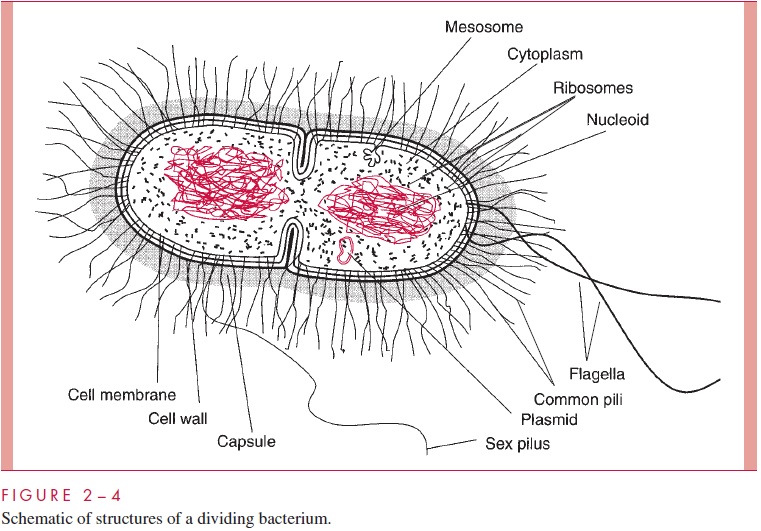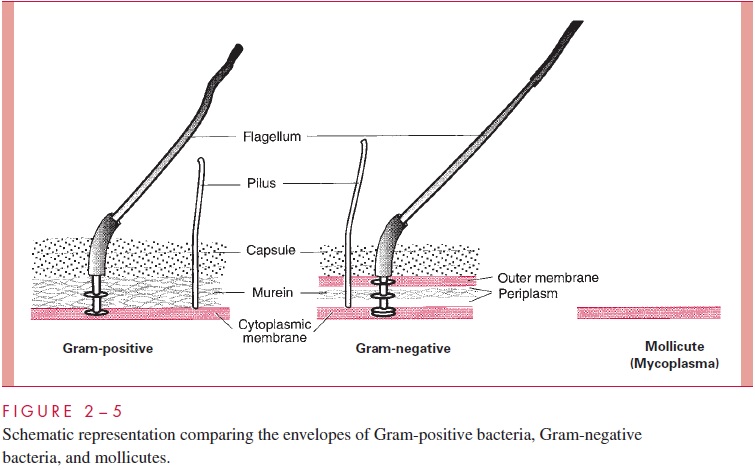Chapter: Medical Microbiology: An Introduction to Infectious Diseases: Bacterial Structures
Capsule - Bacterial Structures
Capsule
Many bacterial cells surround themselves with one or another kind of hydrophilic gel. This layer is often quite thick; commonly it is thicker than the diameter of the cell.Because it is transparent and not readily stained, this layer is usually not appreciated unless made visible by its ability to exclude particulate material, such as India ink.
If the material forms a reasonably discrete layer, it is called a capsule; if it is amorphous in ap-pearance, it is referred to as a slime layer.Almost all bacterial species can make such ma-terial to some degree. Most capsules or slime layers are polysaccharides made of single or multiple types of sugar residues; some are simple (though unusual) polypeptides, such as the polymer of D-glutamic acid, which forms the capsule of Bacillus anthracis, the causative agent of anthrax; a few are proteins. When cultured on solid media, encapsulated bacteria give rise to smooth, often mucus-like colonies, but unencapsulated variants are common, particularly with long-term laboratory cultivation. Their colonies are nonmucoid and described as “rough.”

Capsules can protect bacteria. Within animal and human hosts capsules impede inges-tion by leukocytes. Streptococcus pneumoniae,the causative agent of pneumococcal pneumonia, in large measure owes its virulence to the ability of its copious polysaccharide capsule to interfere with opsonophagocytosis. The pneumococcal polysaccharide, as is the case with most capsular material, is antigenic , and when specific antibody attaches to it, phagocytosis can occur. A mouse–pneumococcus experimental model is instructive. Unencapsulated pneumococci are tolerated by mice; however, a single encapsulated cell injected intraperitoneally will kill a mouse unless the mouse has been immunized with capsular material of the specific antigenic type of the infecting pneumococcus, in which case it is protected. More than 80 capsular serotypes of this organism are known, reflecting a diverse genetic capacity of the species to produce capsular polysaccharides of differing chemical structure.
Protection against phagocytosis is only part of the much broader function of bacterial capsules in nature, which is to aid colonization, primarily by assisting the cell to attach to surfaces. For example, the ability of Streptococcus mutans and Streptococcus salivariuscells to adhere to the surface of teeth is in large measure a function of the polysaccharide capsules of these oral bacteria .
Capsules do not contribute to growth and multiplication and are not essential for cell survival in artificial culture. Capsule synthesis is greatly dependent on growth conditions. For example, the capsule made by the caries-producing S. mutans consists of a dextran–carbohydrate polymer made only in the presence of sucrose.

Related Topics